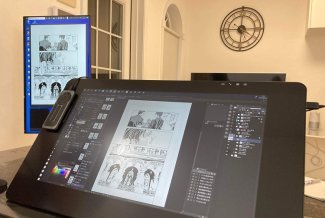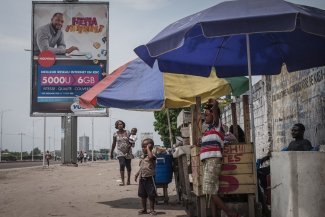The United Nations (UN), the International Labour Organization (ILO), the International Federation of Journalists (IFJ) and local journalist unions have been trying to tackle the abysmal pandemic of gender-based violence (GBV) for literally decades.
It is not new, but the #MeToo movement has forced the discussion into the public arena on a scale never seen before.
When defining GBV against female journalists and media workers, we refer to a triple risk jeopardy: at risk of violence just like every other woman on the planet; the same risks as our male colleagues; and risks that impact us because we are women journalists.
Globally, journalists’ unions have had reports of direct forms of violence (targeted violence, torture, murder, femicide, sexual violence, death and familial threats, imprisonment, abuse of sedition and libel laws, bullying, harassment, sexual harassment, domestic partner violence and online bullying/abuse), as well as indirect forms of violence (forced into insecure and temporary work, poverty, overt discrimination and systemic discrimination).
All of the above are forms of GBV. They are also the result of abuse of power and most are human rights violations.
Scale, scope and practice
A new survey by the IFJ shows that “almost one in two women journalists have suffered sexual harassment, psychological abuse, online trolling and other forms of gender-based violence while working.”
Almost 400 women across 50 different countries were surveyed and 66 per cent of those that had experienced some form of GBV admitted they had made no formal complaint. Of those that did, 85 per cent responded that “no or inadequate action has been taken against perpetrators”, and that most workplaces (74 per cent) have no reporting or support mechanisms.
These last two statistics are especially important when looking at who the perpetrators are: 38 per cent were a boss or supervisor, 45 per cent were people outside of the workplace (sources, politicians, readers or listeners), and 39 per cent were anonymous assailants.
While there has been some recent work on reporting mechanisms (the IFJ Byte Back campaign and the EFJ/European Centre for Press and Freedom reporting platform, for example), and some really good best practice guidance (the ETUC’s Safe at Home, Safe at Work as well as the OSCE’s Countering Online Abuse of Female Journalists), reporting mechanisms are primarily aimed at collecting data. While good practice is great, it is only meaningful if local unions can actually implement these measures.
However, it appears from the above statistics that women journalists who experience GBV do not feel safe and supported in coming forward, and when they do, overwhelmingly they do not get any form of resolution.
There is a practical disconnect between actions taken so far and the experience of women journalists.
The real surprise?
The real surprise within the floods of reports of sexual harassment and abuse in the US and elsewhere in the world is the number of women willing to come forward.
These women face the sort of scrutiny – not to mention further harassment and threats of violence – that was historically seen in rape cases, and which kept women silent for many years. Fear of loss of their work, loss of standing in the community or on the job, shame, stigma, further abuse and escalating violence, including online, have also kept many women silent.
Their fears are far from irrational. According to the Dart Center for Journalism and Trauma, the impact of harassment is usually avoidance, denial or leaving the profession. It rarely ends with confrontation of the abuser and even less with successful prosecution.
In 2012, the IFJ and its gender council were asked to support Macedonian journalist, Meri Jordanovska.
She was being attacked online by a national TV commentator. He published private and distorted pictures of her and verbally abused her. He sexualised his attacks and, at one stage, suggested that she had been abused as a child. On national television, he added her to his “wanted dead or alive” list.
This case was reported to the Ministry for Internal Affairs, Facebook, and the Directorate for Personal Data Protection. To date, no resolution has occurred, although eventually the photos were removed from Facebook. According to the local union, since this time, harassment and sexist attacks are increasing in general, but no other women have come forward.
In Somalia in 2014, Faduma Abdulkadir, 19, was raped in a newsroom. As a consequence of reporting the rape, she was arrested and sentenced to a six-month suspended prison sentence, while her rapist remains free.
The local journalists’ union, the National Union of Somali Journalists (NUSOJ), working with the Italian union, Federazione Nazionale della Stampa Italiana (FNSI), were able to get Abdulkadir out of Somalia. She was eventually granted political asylum in Italy and received an award for her courage.
But these examples are far from unusual.
Courage - sometimes unbelievable levels of courage, especially in the face of state-sponsored violence - is what it takes for women to come forward. It shouldn’t be.
It is well past time to stop this polite pretense of not seeing and not knowing.
The use of words like ‘startling’ and ‘shocking’ in headlines that discuss gender-based violence only add to the pretense while shifting the focus of the discussion away from solving the problems of inadequate individual/workplace reporting and support mechanisms, lack of national harassment and bullying laws, the lack of implementation of what laws do exist and the failure to apply international labour conventions.
We need to make it safe for female journalists to come forward without fear of retribution.
The aforementioned IFJ survey has clearly shown the practical disconnect between action and impact. Effecting real change will require the elimination of all contributing factors to GBV, at each and every level, especially tackling impunity.
If it is an abuse of power, it is GBV. And for those who have experienced it, it is time to connect and be heard.









